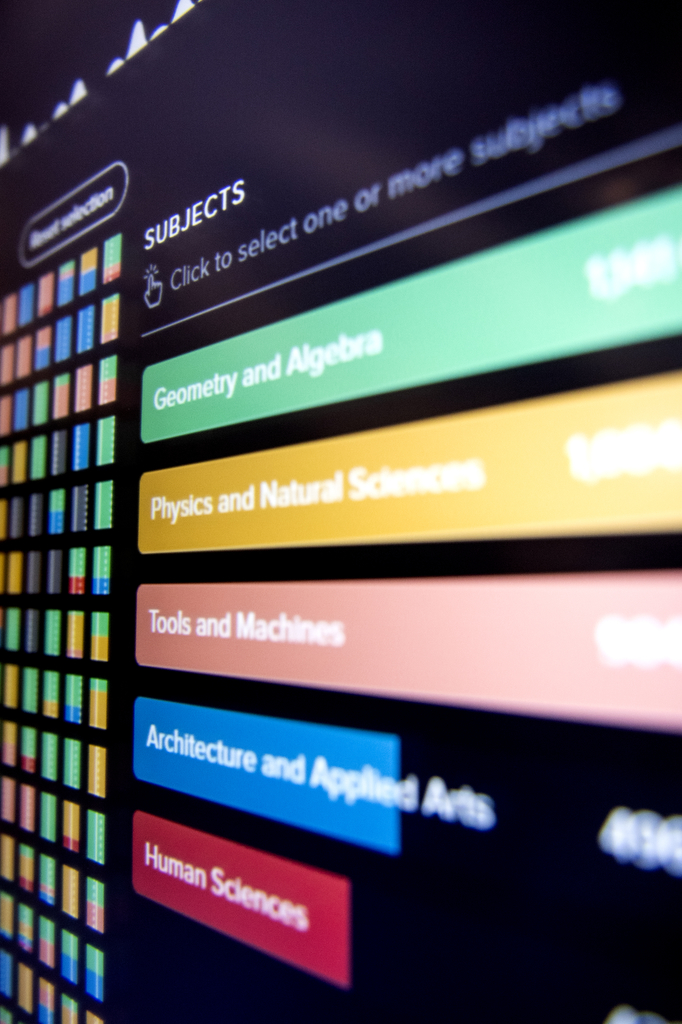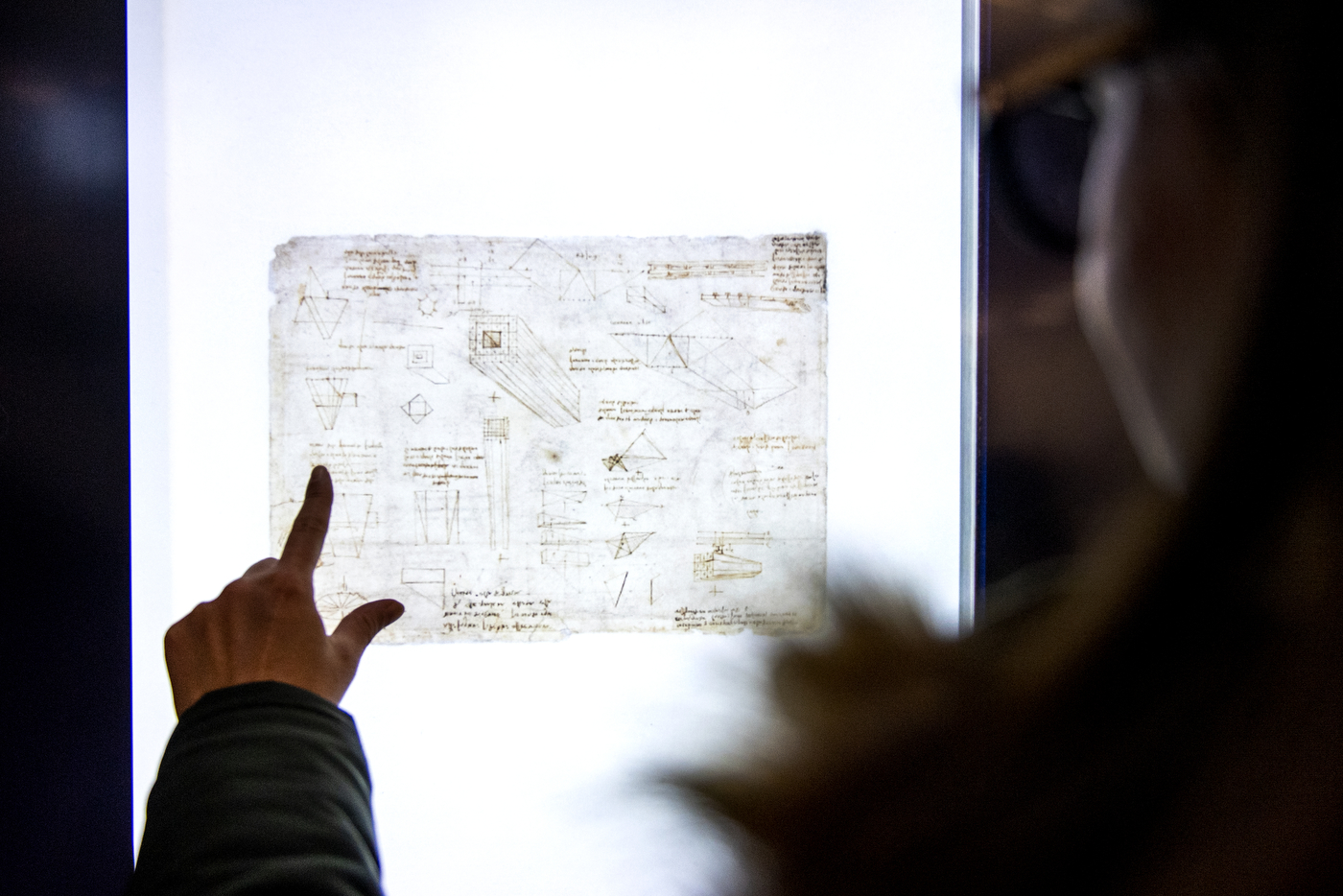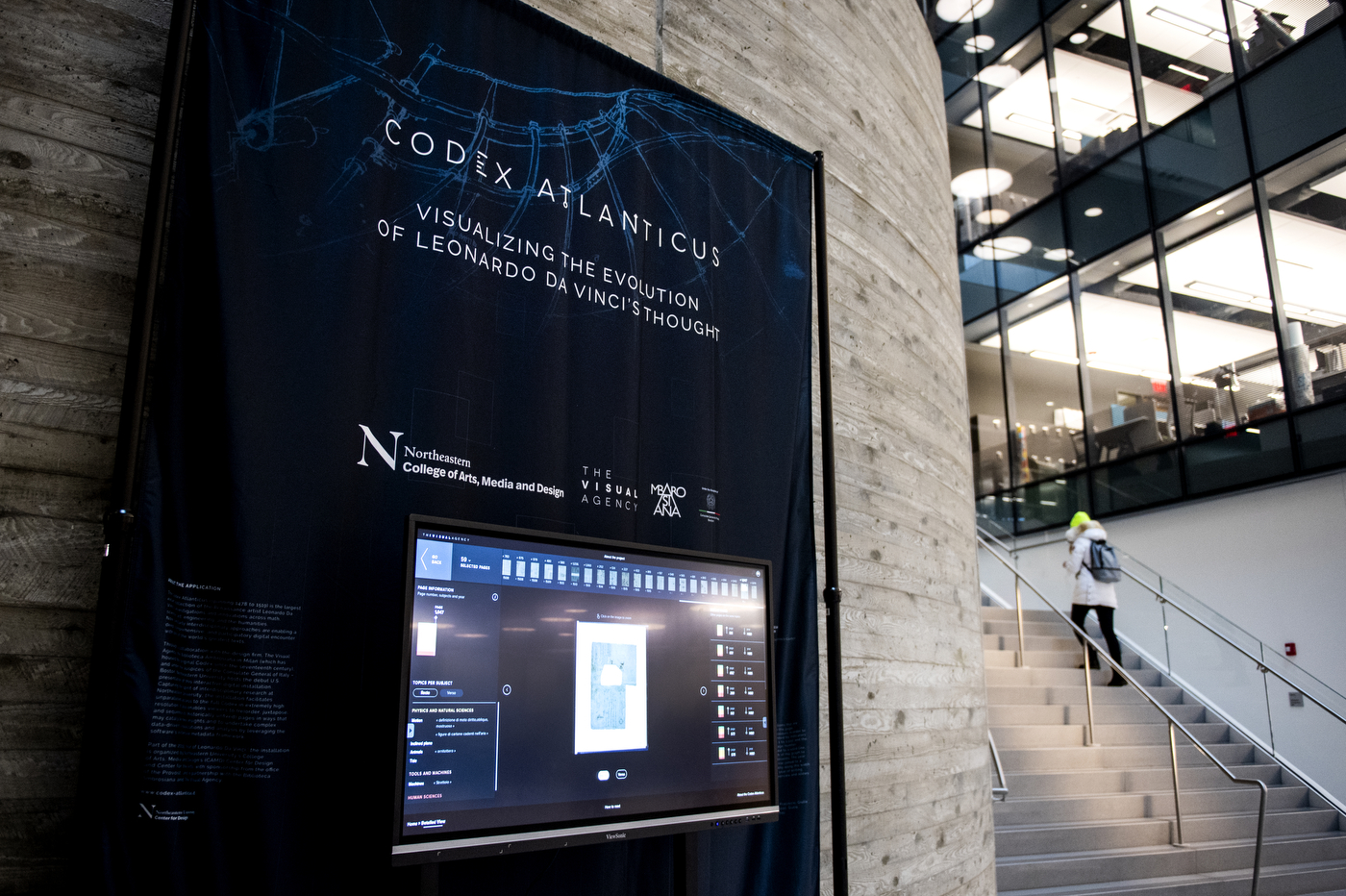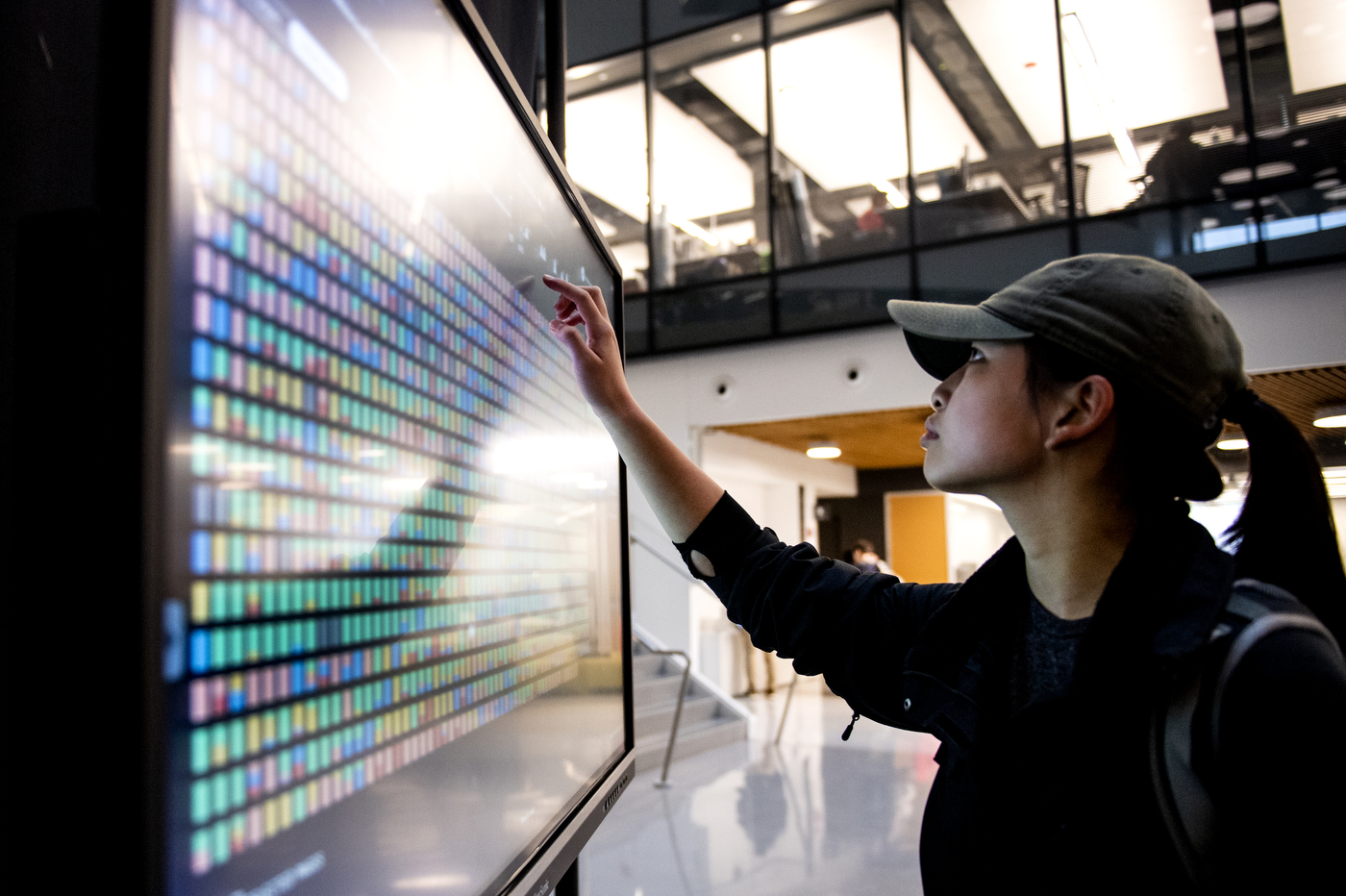Digital installation brings Leonardo da Vinci’s Codex Atlanticus to Northeastern University

Leonardo da Vinci’s Codex Atlanticus, a 12-volume bound set of drawings and writings covering a variety of topics, such as weaponry and botany, has exchanged a few hands in its nearly 500-year history. At one point, Napoleon had it in his possession, seizing it after conquering Milan and sending it to the Paris Institut de France. In the 1960s, Basilian monks restored and rebounded the text.
This week, the Codex found a second life in the airy atrium inside the glass and metal walls of Northeastern’s Interdisciplinary Science and Engineering Complex, on the Boston campus.
To be clear, it is not the original text. If you want to leaf through the collection of 1,119 leaves comprising the Codex, you’ve got to visit the Biblioteca Ambrosiana in Milan, where it has lived since the 17th century. But, this interactive digital installation of the text comes pretty darn close to the real thing.



A touch screen in front of a black fabric backdrop in the back of the atrium invites visitors to thumb through high-resolution renderings of the artist’s explorations of flight, war machines, and musical instruments. The color-coded interface is designed to enable the user to reorder and sequence the pages in ways that may catalyze new insights.
“I think it’s very difficult not to get fascinated, to fall in love with the extraordinary richness of these pictures, this content,” said Paolo Ciuccarelli, a professor of design and the founding director of the Center for Design at Northeastern, who previously led the Communication Design program at Politecnico di Milano in Italy, where he worked for 20 years across disciplines. “Hand-drawn pages from the 15th, 16th century—I mean, it’s something really mind-blowing.”
The Codex was unveiled on Nov. 20, and will be on display for the next four weeks. It comes on the heels of the 500-year anniversary of the Renaissance master’s death in 1519 in the historic town of Amboise in France’s Loire Valley.

Northeastern, where interdisciplinary education is at the core of the university’s vision, is just the place for the installation, says Ciuccarelli. Much like how the Renaissance man himself moved fluidly between the disciplines of art and science, the project, too, is the culmination of an interdisciplinary fusion of art, data, computer science, and design, he says.
“I see the work of Leonardo as yet another example of this kind of collaboration between two different disciplines around the table working on something,” Ciuccarelli says. “You just have to be really open and honest in accepting a certain degree of contamination, but it’s necessary.”
The project was developed by The Visual Agency, a design firm in Milan, in partnership with the Biblioteca Ambrosiana. The Center for Design of the College of Arts, Media and Design helped bring the installation to the university, along with the Office of the Provost and the Italian Consulate in Boston.
For media inquiries, please contact Mike Woeste at m.woeste@northeastern.edu or 617-373-5718.





